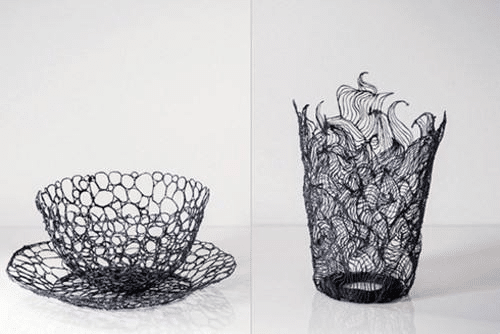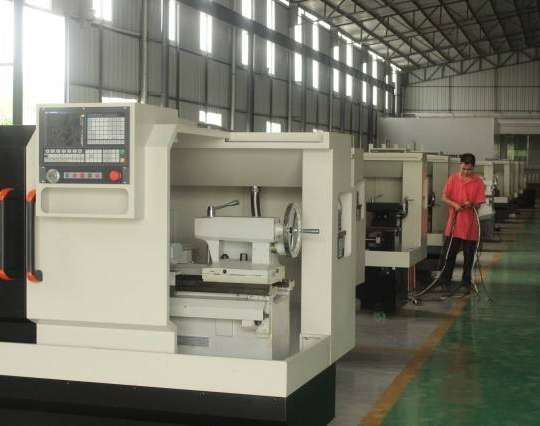If you ask, “What’s the difference between CNC machining and 3D printing?”
The most straightforward answer: 3D printing is an augmentation technology, CNC machining is a reduction technology.
1. Material differences
The main materials for 3D printing are liquid resin (SLA), nylon powder (SLS), metal powder (SLM), gypsum powder (full color printing), sandstone powder (full color printing), wire material (DFM), sheet material (LOM), etc.
Liquid resin, nylon powder and metal powder occupy the vast majority of the market for industrial 3D printing.
The CNC machining materials are all sheet metal, that is, sheet material. By measuring the length, width and loss of parts, and then cutting the corresponding size of sheet metal for processing.

#CNC machine working on flat bar
CNC processing materials are more than 3D printing. Generally, metal and plastic sheets can be processed by CNC, and the density of forming parts is better than 3D printing.
2. Part differences due to forming principles
As we mentioned earlier, 3D printing is a kind of augmentation manufacturing. Its principle is to cut the model into N layers / N points, and then stack it up one layer by one in order, just like building blocks.
Therefore, 3D printing can effectively process and produce complex parts, such as hollow parts, while CNC is difficult to achieve hollow parts processing.

#Hollow out parts
CNC processing is the reduction of material manufacturing, through the high-speed operation of various cutting tools, according to the programming tool path to cut out the required parts. Therefore, CNC machining can only produce rounded corners with a certain degree of arc, but can not directly process right corners. It should be realized by wire cutting/sparking and other processes. CNC machining of right angle outside is no problem. Therefore, parts with inner right angles can be considered to choose 3D printing processing production.
There is also the surface, if the surface area of parts is relatively large, it is also recommended to choose 3D printing, CNC machining surface is very time-consuming, and if the programming and operator experience is not enough, it is easy to leave obvious lines on the parts.
No wonder some people say that 3D printing is a cake made of cake powder, while CNC cuts big cakes into small cakes. It’s easy to understand.
3. Differences in Operating Software
The slicing software of 3D printing is mostly easy to operate. Even the layman can operate the slicing software skillfully in a day or two under professional guidance. Because slicing software is currently very simple to optimize, support can be automatically generated, which is why 3D printing can be popularized to individual users.

#Slice rendering sketch
CNC programming software is much more complex, which requires professionals to operate. Zero-basic people usually need to learn about half a year. In addition, a CNC operator is needed to operate the CNC machine. UG, MASTERCAM, CIMATRON and domestic fine carving are commonly used. There is still some difficulty in learning these software.#UG operation interface

#UG operation interface
Because the programming is very complex, a component can have many CNC processing schemes, while 3D printing is relatively objective because the placement of materials has a small part of the impact on processing time.
4. Differences in post-processing
There are few post-processing options for 3D printing parts, such as polishing, spraying, deburring, dyeing and so on.
CNC machined parts and components post-processing options vary, in addition to grinding, spraying, deburring, as well as electroplating, silk printing, transfer printing, metal oxidation, radium carving, sandblasting and so on.
CNC machining and 3D printing have their own advantages and disadvantages. Choosing the right processing technology plays a vital role in your handboard project.


